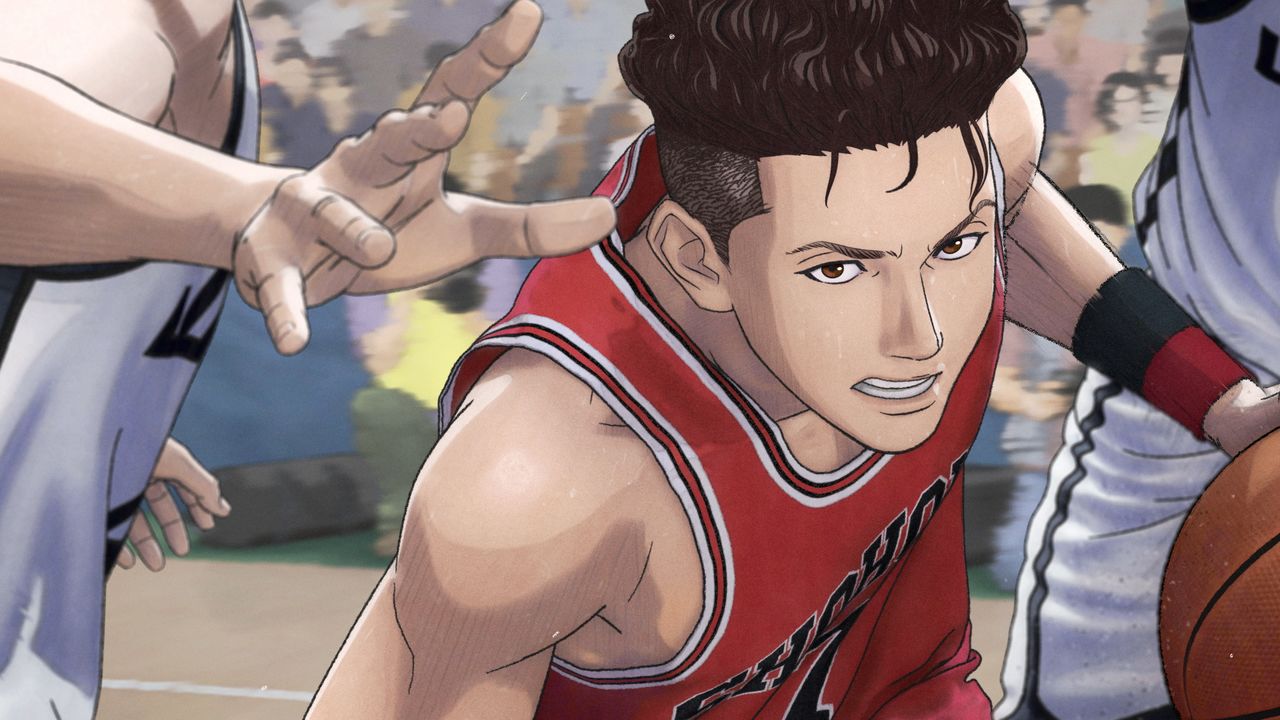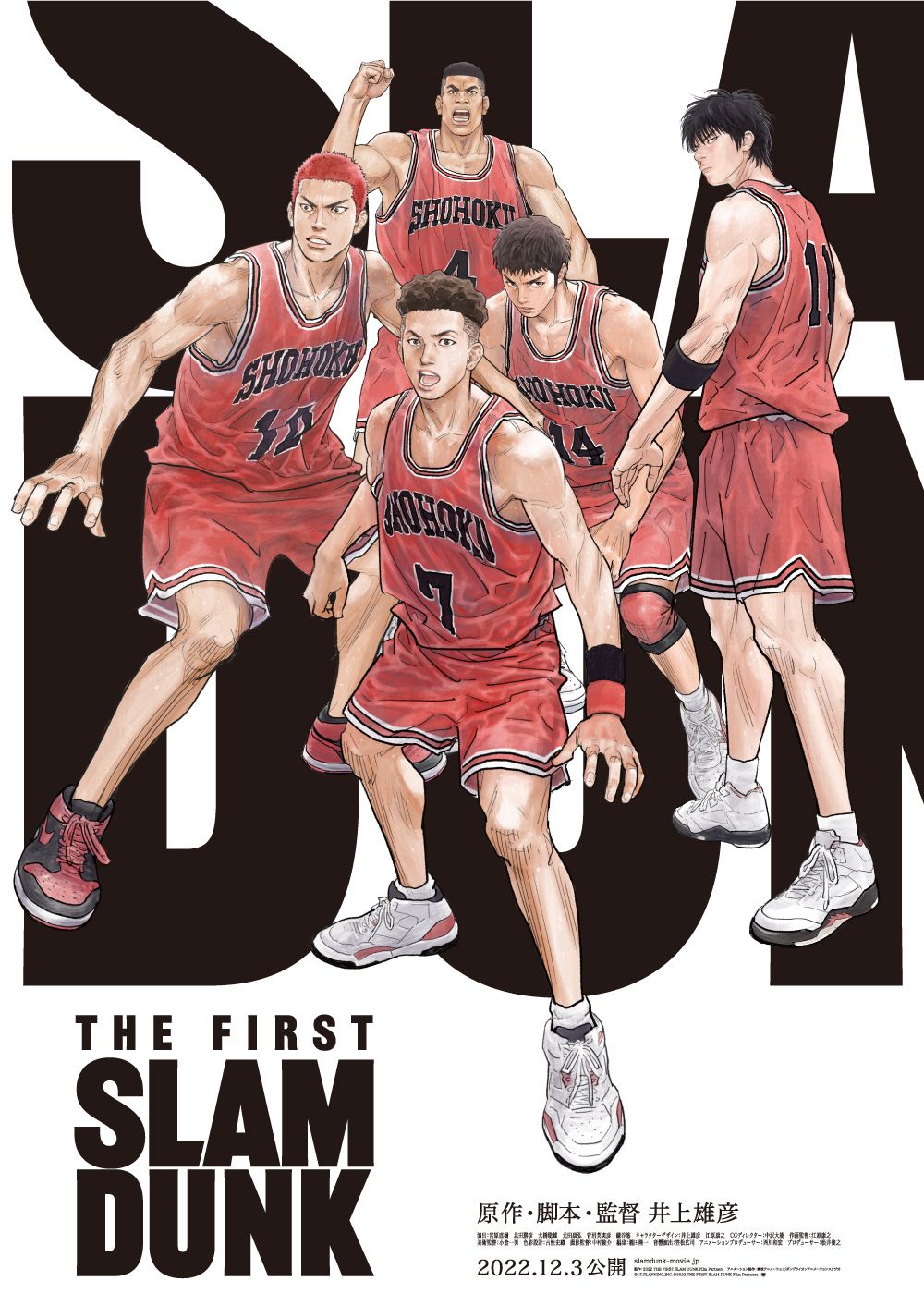
Examining the Unprecedented Success of “The First Slam Dunk”
Anime Manga- English
- 日本語
- 简体字
- 繁體字
- Français
- Español
- العربية
- Русский
A Historic Masterpiece of Manga Storytelling
There are many manga hits and classics, but only a handful reach the level of becoming masterpieces. Inoue Takehiko’s Slam Dunk is widely acknowledged as being one of them. It continues to gain acclaim even today, and in December 2022 Inoue himself took the helm to write and direct a theatrical animated version of his work, called The First Slam Dunk. It proved a major hit. By May 2023 it had earned ¥13.8 billion at the box office in its home country, going on to augment the franchise’s fanbases in China and South Korea as well.
China proved fertile ground in particular, where close to 3 million saw the movie on opening day alone, far outstripping Korea or even Japan. Four days later the number broke 10 million viewers.
The success attracted the notice of the political world as well. Wu Jianghao, China’s ambassador to Japan, even mentioned Slam Dunk in a press conference at the Japan National Press Club. Wu is known for his hardline statements that reflect the stressed geopolitics between Japan and China, but with regard to this topic, he softened his stance, remarking on how the film seemed to be even more popular in China than Japan.

Excited fans queuing for the debut showing of The First Slam Dunk movie at a Beijing movie theater. (© Kyōdō)
The Slam Dunk manga debuted in 1990 in the pages of weekly Shōnen Jump magazine. Protagonist Sakuragi Hanamichi, a tall, red-headed juvenile delinquent, transfers into Shōhoku High School. He meets a girl named Akagi Haruko, who convinces him to join the school’s basketball team.
He quickly tires of basic training and drops out, but eventually warms to the sport, awakening to his abilities and dubbing himself “Basketman.” He throws himself into training for the sake of his team and dedicates himself to beating their rivals.
The manga portrays not only Sakuragi, but the lives of many young students filled with optimism and striving to grow. It’s great entertainment, but it also delivers aspirational messages to readers as well.
One key message running throughout the work: “People can change.”
Sakuragi grudgingly joins the basketball team after transferring into a new school. At first he’s teased as an amateur by his teammates, but he soon blossoms as an athlete and becomes an essential member of the team.
He isn’t alone. Akagi Takenori, who is forced into becoming team captain too soon after star player Mitsui Hisashi tries to get the team disqualified, evolves greatly as a character. Coach Anzai Mitsuyoshi, once famed as the “White-Haired Devil” for his harsh training techniques, evolves into the “White-Haired Buddha” to guide his team to victory.
“Even geniuses hit setbacks” is another undercurrent in Slam Dunk. Sakuragi’s own personal “genius,” in the form of the body and athletic ability with which he was blessed, allows him to grow and flourish as a player. But genius isn’t always enough in life. Born players like Mitsui hit road bumps in their game, while smaller-statured players like Miyagi Ryōta use their personal characteristics to their advantage.

The First Slam Dunk uses 3D CG animation to bring out the reality of the game, while maintaining Inoue’s celebrated hand-drawn art style. (© I. T. Planning, Inc. © 2022 The First Slam Dunk Film Partners)
Yet another ongoing theme in the work is this: “Frustration and conflict make people stronger.” Losing isn’t always a cause for embarrassment. Overcoming conflict and defeat makes people stronger. Even Sakuragi’s lifelong rival, the brilliant player Rukawa Kaede, runs into obstacles that let him grow.
The engine behind this growth is yet another theme: “The game’s only over when you give up.”
It’s messages like this that resonate with readers, making Slam Dunk more than just a hit. Its messages are timeless, which has led to the series’ ongoing success.
“Anzai-sensei! I just want to play baskeball!”
Among fans, these lines said by Mitsui Hisashi ring with all of the power the famed phrase “I am your father” had for Star Wars fans of its era.
According to The First Slam Dunk website, the manga series has sold a total of 120 million copies to date. It counts many fans abroad, such as the twin NBA stars Robin and Brook Lopez, and particularly so in China, where it has been a hit since the 1990s.
The Reality of Slam Dunk
Still, what makes this series so beloved? Note what Slam Dunk is missing compared to real life: the Internet. When the series debuted in the early 1990s, there were no smartphones or social-media services. Back then, when Aida Hikoichi of Ryōnan High wanted to check out some hot new player, he had to go to that school and see with his own eyes.

Slam Dunk fans at an Enoshima Electric Railway crossing, one of the real-life inspirations for settings in the manga and anime to which fans around the world make pilgrimages. Taken on December 2022, Kamakura, Kanagawa Prefecture. (© Kyōdō)
Even in the new film The First Slam Dunk, the appeal is that of nostalgia: magazines and photos, the old basketball shoes, the “analog” feel. And one key message is delivered through a handwritten letter.
The star is a delinquent who isn’t much of a talker. He expresses himself through his playing. If the series were set in the modern day he’d be someone who threw himself into basketball rather than posting online. The manga portrayed his game scenes with unprecedented impact. The film draws out the rhythms hinted at on the page, using the power of animation to create a sports experience that no real-life game can match.
The modern world is filled with words. Thanks to social media, our relationships are made visible on the screen. There are positive aspects to this, but the virtualization of our lives can also be overstimulating and misleading, too.

Details about The First Slam Dunk stayed under wraps until just before the film’s debut on December 3, 2022—to the point where the press screening was held after the official opening. (© I. T. Planning, Inc. © 2022 The First Slam Dunk Film Partners)
On the other hand, The First Slam Dunk is a visceral world, driven by sweat and breath and muscle. Those in the stands can only hold their breaths as they watch the battle on court unfold, every move searing into their brains. The film successfully transmits this “reality” to new fans.
And there’s another reason as well. In Japan, basketball remains a relatively minor sport in comparison to baseball or soccer. Should you have asked modern day marketing and research teams about the potential for making a hit series out of such an “undeveloped” sport, they undoubtedly would have answered in the negative.
But Inoue, himself a basketball fan, actually used this as material to launch what became a global hit. (In thanks for breaking the 100 million sales mark for the Slam Dunk manga, Inoue established the “Slam Dunk Scholarship” in 2006.) You can imagine him saying: “I just want to draw basketball . . .”
More than common sense, it’s passion that changes the world. That quiet but powerful message is one of the underlying reasons that Slam Dunk is so loved around the world.
(Originally published in Japanese. Banner image: The First Slam Dunk offers a new take on the manga. The protagonist Sakuragi Hanamichi can be seen standing at right. © I. T. Planning, Inc. © 2022 The First Slam Dunk Film Partners.)

